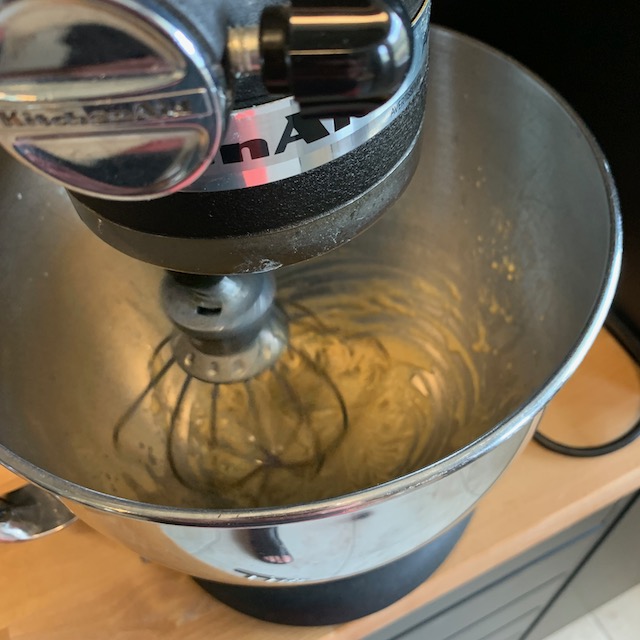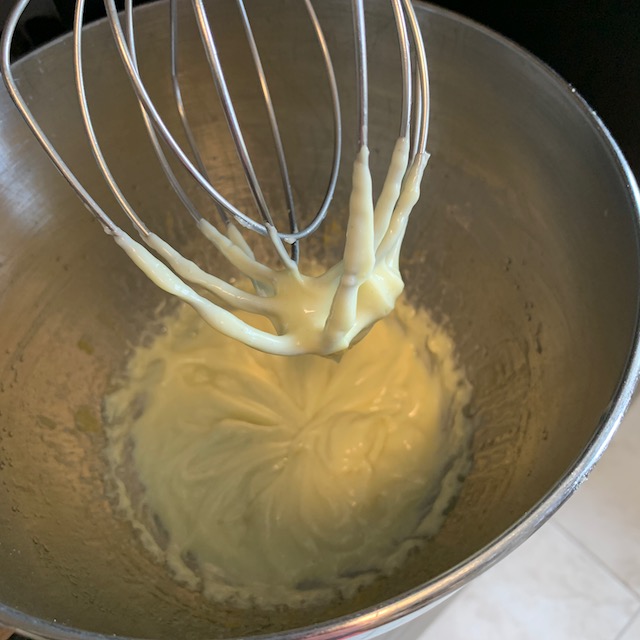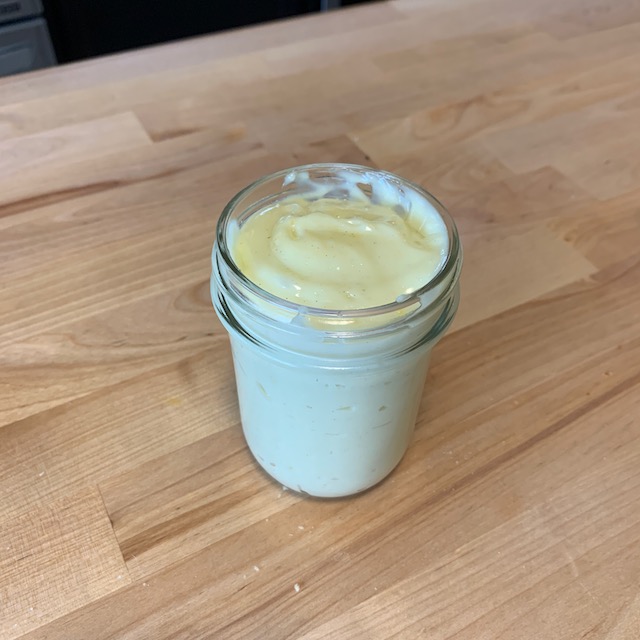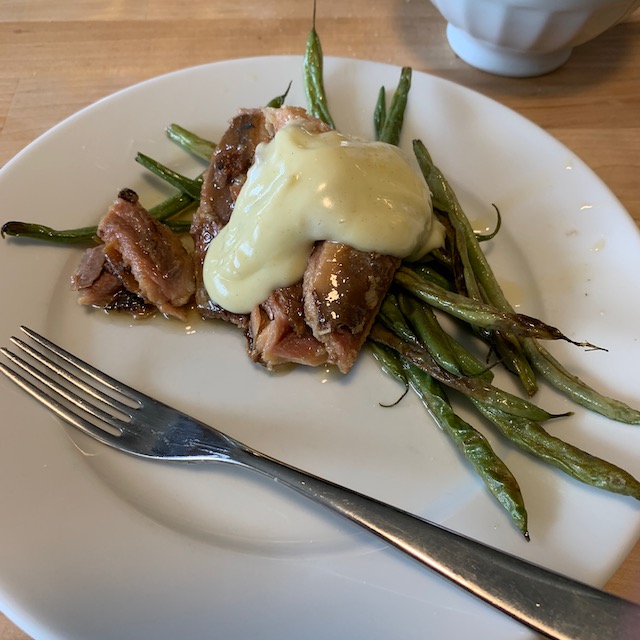When I was a grad student at the U of Chicago, I cooked in a restaurant, and one of the duties I relished most was making fresh mayonnaise, 2 quarts at a time.
During this period of sheltering-at-home, I’ve made several 1 cup batches, so I thought I’d share my recipe and encourage you to give it a try. Incidentally, mayonnaise is beautiful on just about everything savory, and many things that aren’t.
Elements

Ingredients (according to me):
- 1/2 teaspoon sugar
- 1/2 teaspoon salt
- 1/2 teaspoon white pepper*
- 1/2 teaspoon dry mustard
- 1 fresh egg yolk
- 1 tablespoon vinegar*
- 2 teaspoons freshly squeezed lemon juice
- 1 cup oil*
*A few comments about ingredients:
White pepper is not “traditional,” but I started putting white pepper in my mayonnaise decades ago, and I’ve never looked back. No one has ever complained, either. I will admit that sometimes I double the white pepper and skip the mustard altogether. When I’m feeling particularly oppositional, I use smoked paprika or cayenne pepper. Live dangerously.
I generally use apple cider or white wine vinegar, but today I’m in the mood for rice wine vinegar. You can use most vinegars but I would avoid balsamic vinegar (on aesthetic grounds). Besides, if you are going to have balsamic vinegar, why mix it with anything?
Now the question that’s been burning since the first days of emulsion-as-condiment: Which oil makes the best mayonnaise? Maybe it’s a flaw, but I’ve never been a person with “favorites.” No favorite color, no favorite dish, no favorite Spice Girl. And no favorite oil for mayo, either. I’m just like that.
Today, I’m using grapeseed oil, which makes for a lovely, light flavor that lets the lemon’s brightness shine. I often use avocado oil, which is a bit heavier, but it has a detectable flavor, so you’d want to be in the mood. In general, go for a light oil (and taste it first: If you wouldn’t drizzle it on some roasted veggies, it doesn’t belong in mayo).
Truth and Method
Let’s start with some truth: The key ingredient in good mayo is patience. If you try to move the process along too quickly, your mayo will break and you’ll be sad. “Break” means the emulsification didn’t work and you ended up with something resembling dingy-yellow curds-and-whey.
It happens to all of us in our time. I’ve been known to eat broken mayo anyway, out of kindness, but it’s not nearly aesthetically pleasing as creamy-smooth, beautifully emulsified mayonnaise.

Whisk the sugar, salt, white pepper, and mustard together with the yolk until smooth.
Mix the vinegar and lemon juice and whisk half of it into the yolk mixture.
I do this phase by hand; the rest is left to a stand mixer, a nasty habit I picked up in professional kitchens.

Put the bowl under the stand mixer and turn the whisk on high. Add a few drops of oil at a time until your emulsion takes off.
Give it a little time. You’ll know you’re emulsifying when the mixture turns a bit lighter and thicker.

Now you’re ready to drizzle a very thin stream of oil into the bowl (still whisking on high), until you’ve added 1/2 cup. Don’t worry if you see a little oil around the creamy blob in the middle. As you drizzle, the oil should become incorporated into the mixture, which should remain creamy and fairly thick. At this point, drizzle in the rest of the vinegar and lemon juice, and continue drizzling the oil until you’ve incorporated the rest.
Leave your mayonnaise at room temperature for an hour, then refrigerate. I’m told that mayo is good for five to seven days, but I can’t vouch for that.

At this point, it’s polite to ask your mayonnaise aficionado what to do with this magnificent emulsion. My answer at about lunch time today: sardines and freshly grilled green beans.

